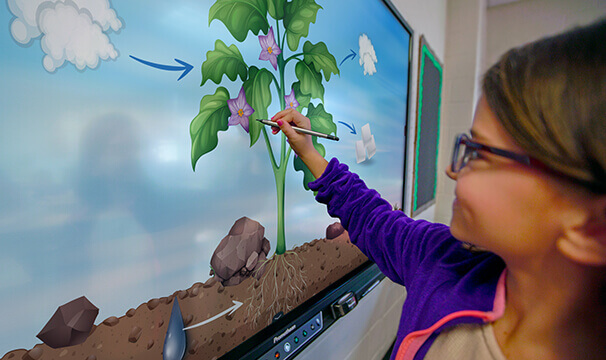The agility of the education profession has really come to the fore in recent months, with schools efficiently mobilising distance learning strategies, then equally quickly returning to the classroom. While students are now technically back in the classroom, the reality is that many schools have had to temporarily close their doors for frequent deep cleaning and students often need to spend longer periods at home when forced to isolate.
Parents are also increasingly nervous about their children attending school as it’s challenging to create the space needed to practice social distancing, while some teachers are moving away from collaborative classroom activities to minimise traditional touch interaction.
Against the backdrop of these challenges, a more blended approach to teaching has emerged as a practical and effective solution. And by using existing classroom technology to facilitate lesson delivery, teachers can integrate a blended approach into curriculum delivery with Promethean.
The ActivPanel interactive display
For students learning in the classroom, the ActivPanel interactive display for the classroom acts as a hub for teacher modelling, interaction and demonstration. At the moment, as students can’t physically work together, a teacher can safely address the group from the panel using a selection of applications and lesson delivery software to enhance and transform the learning environment. With advanced interactivity and access to a range of pre-loaded apps that support ‘in-the-moment’ learning, students can communicate and work together from a distance.
The Promethean Screen Share App can also encourage interactivity within the classroom by connecting all students using handheld devices. As an opportunity to support student-driven conversation and peer assessment and measure class understanding, Screen Share is a chance for individuals to collaborate without the need for physical engagement.
Also providing students learning at home have access to the internet, Screen Sharing allows them to work with their peers in the classroom by enabling teachers to connect to student devices wherever they are. As teachers can interact and work with students at a distance, Screen Share encourages engagement and drives lesson collaboration even if the students aren’t in the classroom.
Similarly, the ActivPanel interactive screen could also be used to connect those students who are learning from home using video conferencing software. If both the teacher and student has access to a webcam, the panel’s ability to access these apps enables home learning students to view and contribute to classroom lessons using these tools. The ability to stack conferencing apps and Screen Share means the teacher can keep the attention of a physical room of students and a virtual room of students all at once, all at the same time.
ActivInspire
The ActivPanel is supplied as standard with ActivInspire lesson delivery software, interactive software which supports teachers to prepare and deliver dynamic and engaging lessons in the classroom. To ensure educational continuity, ActivInspire’s built-in screen recorder functionality has given teachers an opportunity to create bitesize videos of lessons, talking students through the key learning points whilst learning remotely.
This is also a useful tool for capturing the conversation in the classroom and creating evidence for assessment. When adopting a blended approach, ActivInspire can be used to support those in the classroom and those still at home. Additionally, students can use ActivInspire at home with Windows, Mac and Linux devices.
Teachers can create interactive flipcharts and share with students to work on independently, providing a consistent learning experience for all students – wherever they are learning. Flipcharts can also be exported into PDF format for those students working on a range of different devices.
For schools facing the need to teach those students in the smaller classes and those who are still at home, adopting a blended approach to learning may be the best solution to adapt and maintain curriculum delivery. This can help to ensure that all students achieve a level of face-to-face interaction with the teacher and can ensure all members of the class have access to a level of continuity whether at home or in the classroom.

